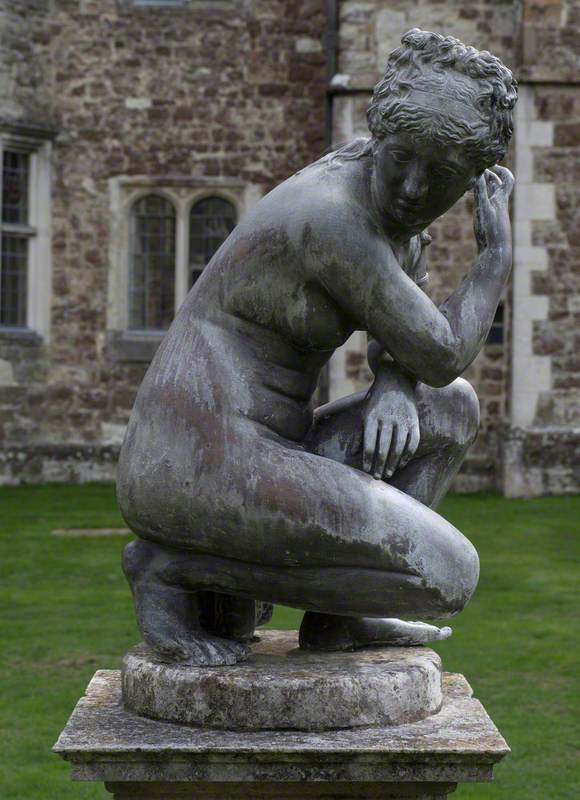On Boxing Day 2015, the Merchant Adventurers’ Hall in York flooded – its proximity to the River Foss leading to the fourteenth-century Guildhall to be deluged with over a metre of water. This is the story of the flood and the Hall’s continued recovery.

Image credit: Lauren Marshall
The Chapel which took the brunt of the damage from the flood still under 30cm of water on 29th Dec
The Merchant Adventurers’ Hall has sat adjacent to the River Foss in York for seven centuries. Its location is no accident, its site chosen by a group of merchants in the fourteenth century as it was adjacent to the river and to its larger neighbour – the River Ouse enabling them to have direct navigable access to trade out of the City and across to Europe. The importance of commerce and in turn the riches that were bestowed on the merchants if they were successful overcame any reservations there may have been to the real danger of flooding.

Image credit: Jim Spriggs
The Merchant Adventurers’ Hall and its garden during the peak of the flood
Evidence suggests that the effects of flooding and its positioning below ground level were issues from the very early days of the Hall’s construction. Timber supports were replaced with robust stone pillars within 100 years of the building being completed and the floor was gradually raised over centuries to limit the impact on the inhabitants who used the Undercroft as an Alms-house. The Hall had flooded three times in the last 150 years. However, with the installation of the Foss Barrier in 1987 (to protect the properties along the River Foss which had been severely affected by floods in 1982) it was hoped that the Hall would no longer see another flood. This was not to be.
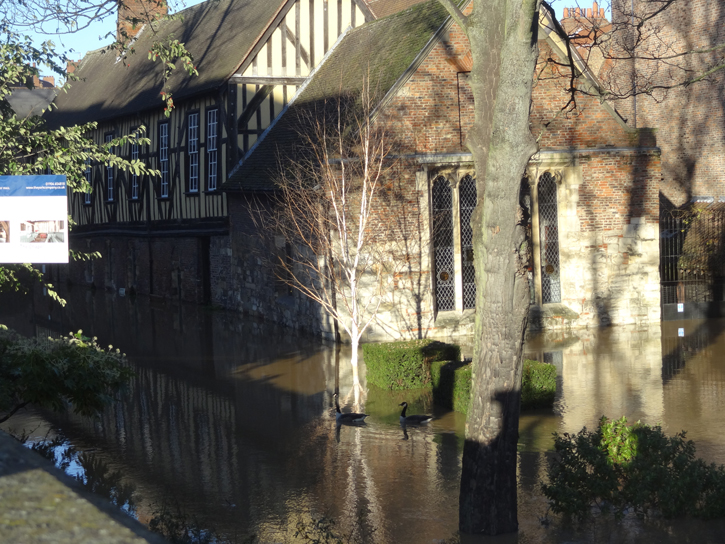
Image credit: Jim Spriggs
The geese taking advantage of being allowed in the garden of the Hall for the first time!
It had rained solidly for the whole of Christmas Day in and around the City, much of which made it's way downstream to the River Foss. The first flood warning was issued on the morning of 26th December – the Hall was checked twice during the day and although the river was high the level was being maintained by the pumps at the pumping station at the Foss Barrier just minutes away from the Hall.
The pumps were at capacity pumping out water but at the same time water had also found its way into the pump room. A catch 22 situation was developing where if the barrier remained down and the pumps failed, water would build up and flood hundreds of properties. The drastic alternative was to lift the barrier and let the Ouse flow back into the Foss which would flood many homes and businesses along the river. A decision had to be made in 15 minutes. The barrier was lifted.
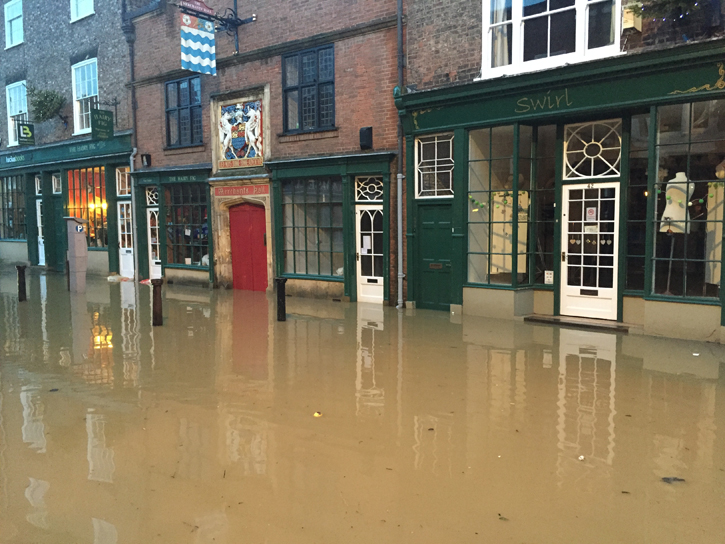
Image credit: Thom Feeney
The Fossgate entrance to the Hall on the afternoon of Sunday 27th Dec
By the evening, water was quickly rising up the gardens, seeping up through the floor and eventually gushing through the walls of the fifteenth-century Chapel. Anything that could be moved upstairs was removed from the flooded ground floor and although efforts were taken to stem the flow, eventually nature had to take its course and items too heavy to remove such as a sixteenth-century Altar Table and seventeenth-century Oak Chest had to be left in the rising flood waters to the dismay of the staff. The water continued to rise the next day and peaked in the Undercroft at 1.1 metres in the early hours of 28th December – it became the highest ever recorded flood level.
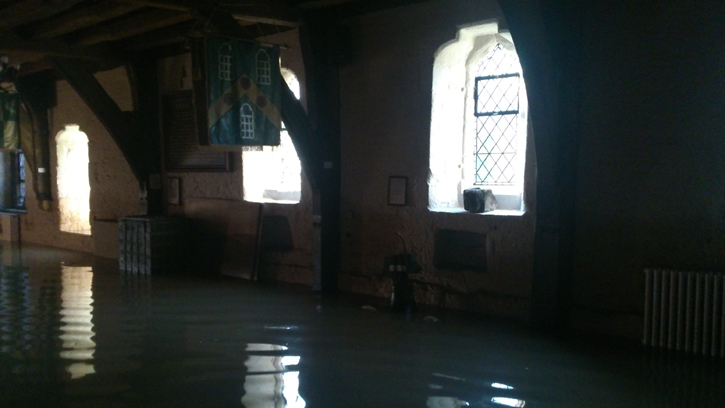
Image credit: Lauren Marshall
The muddy walls and flood water in the Undercroft
After emergency repairs to the barrier and pumps, the water began to recede. At 8.30am on the morning of 29th December, the floodwaters remained welly high in the chapel, with all pumps on the River working at capacity – a puddle on the Undercroft floor was all that remained by 4.30pm the same day. As volunteers from across York and further afield arrived at the Hall donning wellies and brandishing marigolds the clean-up operation began in earnest. This process continues today.
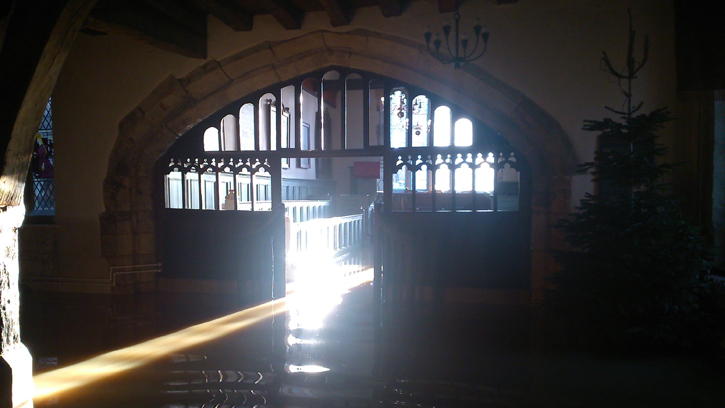
Image credit: Lauren Marshall
The Chapel, Undercroft and a rather soggy Christmas trees as the waters began to recede
It is six months after the flood and the Hall remains a ‘work in progress’. Dehumidifiers can still be seen dotted around the Hall, the walls in places are still damp and the Chapel, the area first hit by the flood is still closed as the conservation work required is only just beginning.
However, despite this there are positives. The Hall opened fully to the public in mid-February and with the exception of one replaceable print – the collections are all accounted for, the two items that had to be left in the flood suffered little damage and have now been fully restored. Perhaps most importantly is that the Medieval fabric of the building, 659 years old this year has bounced back with no lasting long term damage.
Lauren Marshall, Hall Manager & Audience Development Officer, The York Company of Merchant Adventurers


